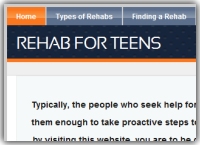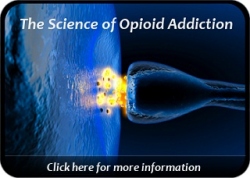 There are many legitimate and appropriate uses for opioid medications. Opioids are excellent at managing acute or chronic pain for back injuries, post-surgical recovery, dental work, and other medical conditions that generate unbearable pain.
There are many legitimate and appropriate uses for opioid medications. Opioids are excellent at managing acute or chronic pain for back injuries, post-surgical recovery, dental work, and other medical conditions that generate unbearable pain.
For those who may become physically dependent upon opioids, their difficult journey often does not begin with a chase for euphoria or a “drug high”, but with a short-term prescription from their physician for a pain killer … in order to minimize the pain and discomfort from a recent surgery or injury.
How the brain & body respond to opiates varies from one person to the next. Some individuals have a very high tolerance for pain and may need relatively less pain relief medication than someone who possesses a high sensitivity to pain.
If an individual takes pain medication for a long enough period of time, they may run the risk of developing a tolerance to the medication such that only higher doses of it are effective at reducing pain. As the person begins to increase their use of the pain medication, a physical dependency begins to set in resulting in withdrawal symptoms when the opioid relief wears off. The only thing that will eliminate the uncomfortable withdrawal symptoms is taking more of the pain medication. And thus, a vicious cycle sets in.
It is important to consider than no one starts out intending to become addicted. Unfortunately, many prescribing physicians do not explain to their patient the potential for developing an addiction to opioids. In fact, there is general consensus emerging that pain prescriptions are too readily given out. Many admissions to methadone clinics include individuals whose opioid dependency began with a legitimate prescription for pain medication. It is important that both doctors and patients share responsibility in addressing the potential for addiction with opioid medications. We do not want to discourage the appropriate use of pain medications. They are extremely effective at helping people manage their pain and be able to function. But education is critical if we are to help individuals adopt the proper caution & awareness in regard to potential opioid dependency.

 Follow
Follow

 How doctors view methadone is becoming a hot topic. A friend recently informed me that the TV celebrity doctor, commonly known as Dr. Drew, was against methadone and had publicly made negative comments about the medication. I was disappointed to learn of this because Dr. Drew has a fairly large national audience who follow his opinion on medical matters. I then noticed that Dr. Jana Burson (a well-educated and experienced opioid addiction professional)
How doctors view methadone is becoming a hot topic. A friend recently informed me that the TV celebrity doctor, commonly known as Dr. Drew, was against methadone and had publicly made negative comments about the medication. I was disappointed to learn of this because Dr. Drew has a fairly large national audience who follow his opinion on medical matters. I then noticed that Dr. Jana Burson (a well-educated and experienced opioid addiction professional)  Teen drug abuse is a persistent problem in America, and unfortunately, is on the rise again. With recent State and Federal budget cuts, funding across the country for adolescent drug treatment has dwindled. There are far fewer drug rehab facilities today than there were just 5 years ago. Locating inpatient and outpatient teen rehab programs has become a challenge for parents and adults seeking local teen drug treatment resources.
Teen drug abuse is a persistent problem in America, and unfortunately, is on the rise again. With recent State and Federal budget cuts, funding across the country for adolescent drug treatment has dwindled. There are far fewer drug rehab facilities today than there were just 5 years ago. Locating inpatient and outpatient teen rehab programs has become a challenge for parents and adults seeking local teen drug treatment resources. There is a
There is a  Methadone treatment has been in existence in the United States since the 1960’s, and it became fairly well-established in the 1970’s particularly in the larger metropolitan cities where heroin addiction was more pervasive. In the 1980’s, methadone clinics continued to emerge across the country since they successfully helped opioid addicted individuals experience dramatic improvement in their lives.
Methadone treatment has been in existence in the United States since the 1960’s, and it became fairly well-established in the 1970’s particularly in the larger metropolitan cities where heroin addiction was more pervasive. In the 1980’s, methadone clinics continued to emerge across the country since they successfully helped opioid addicted individuals experience dramatic improvement in their lives.


